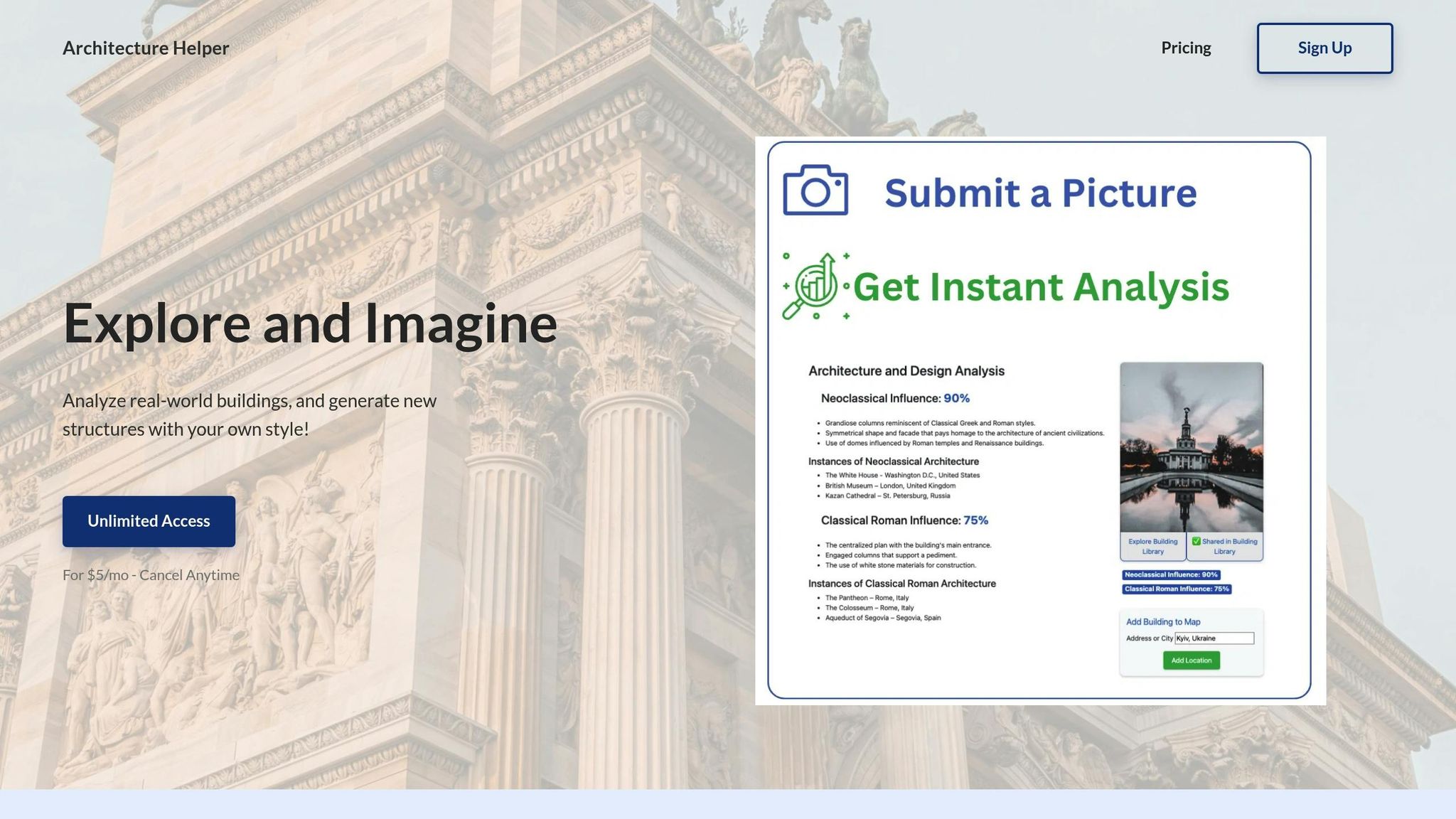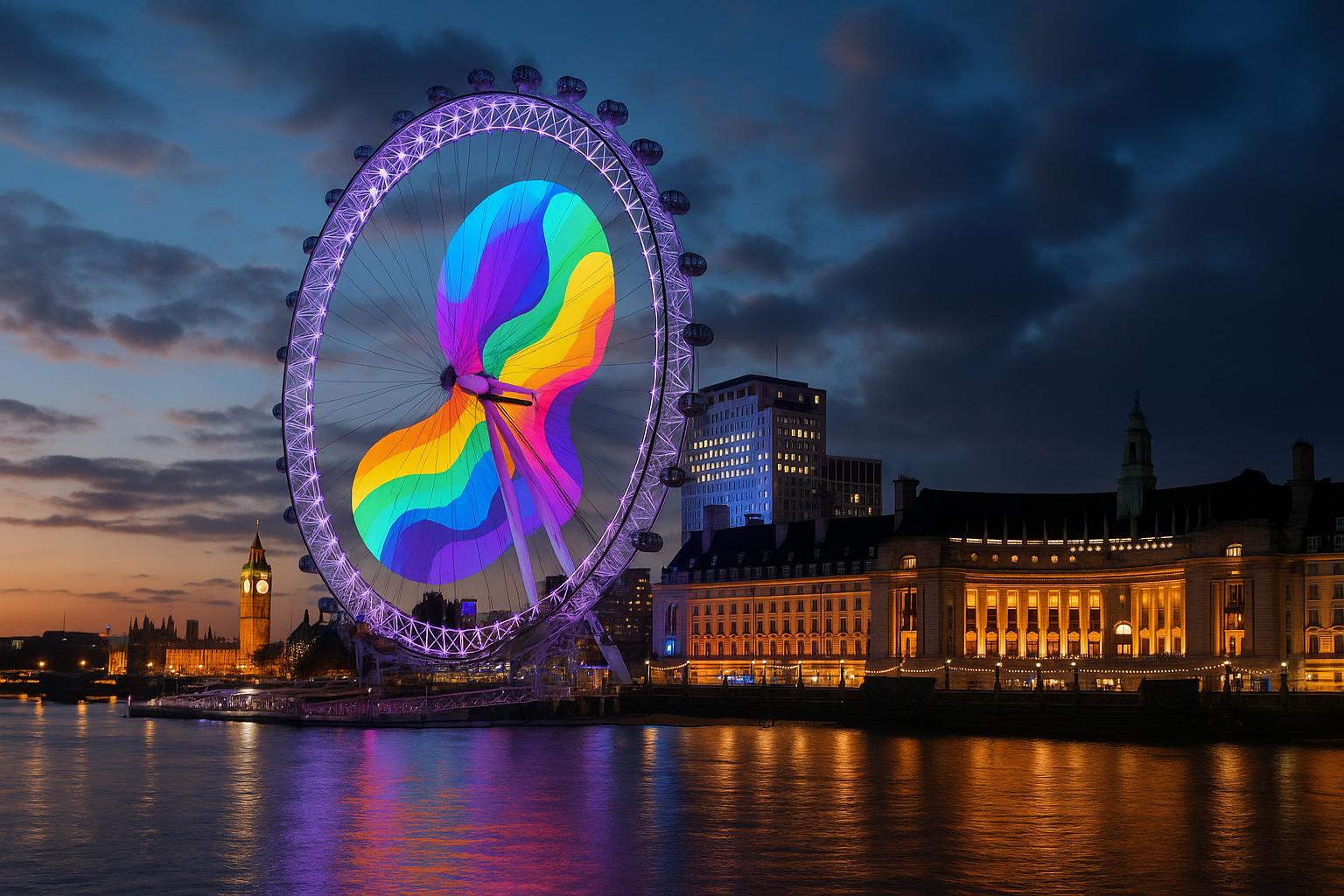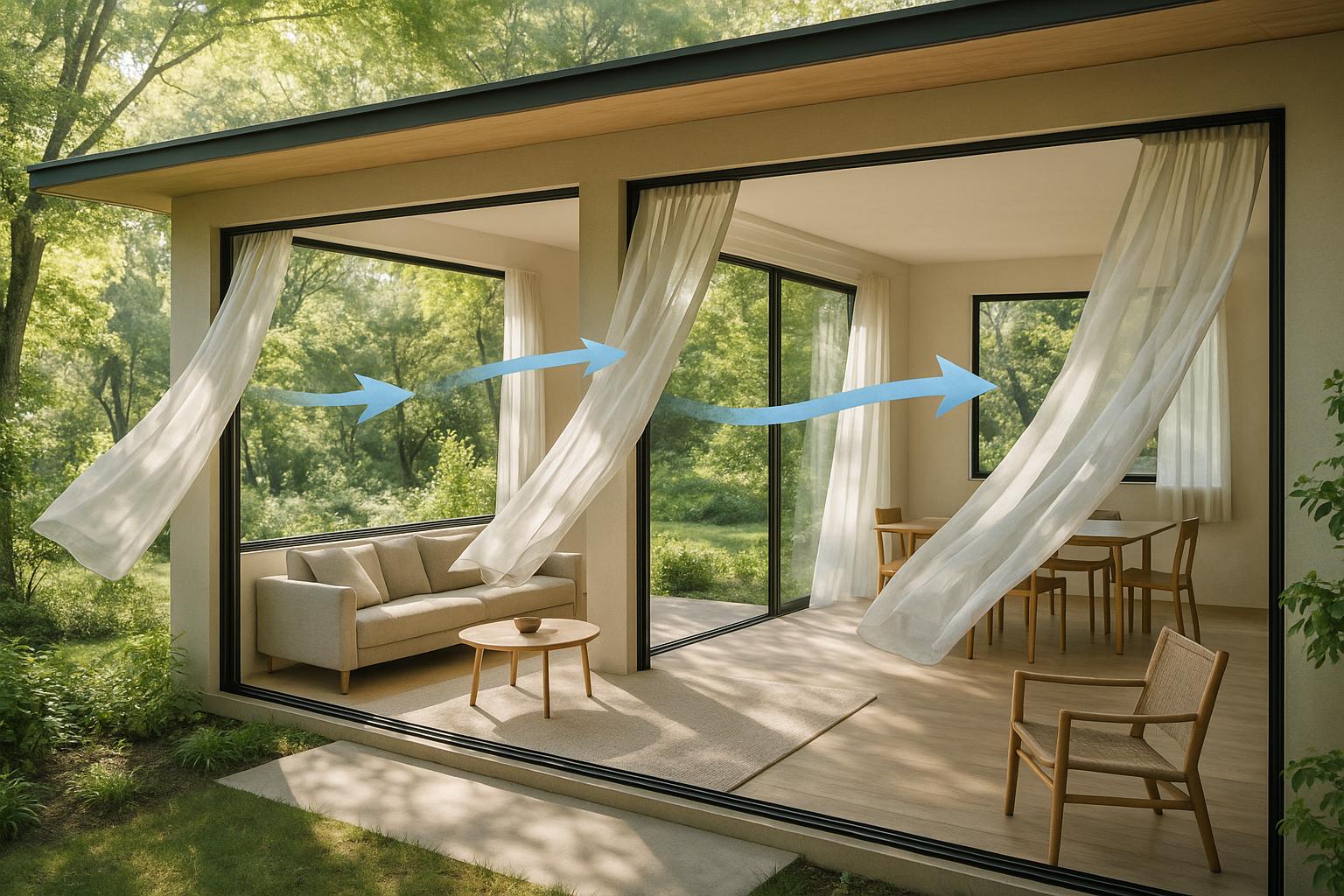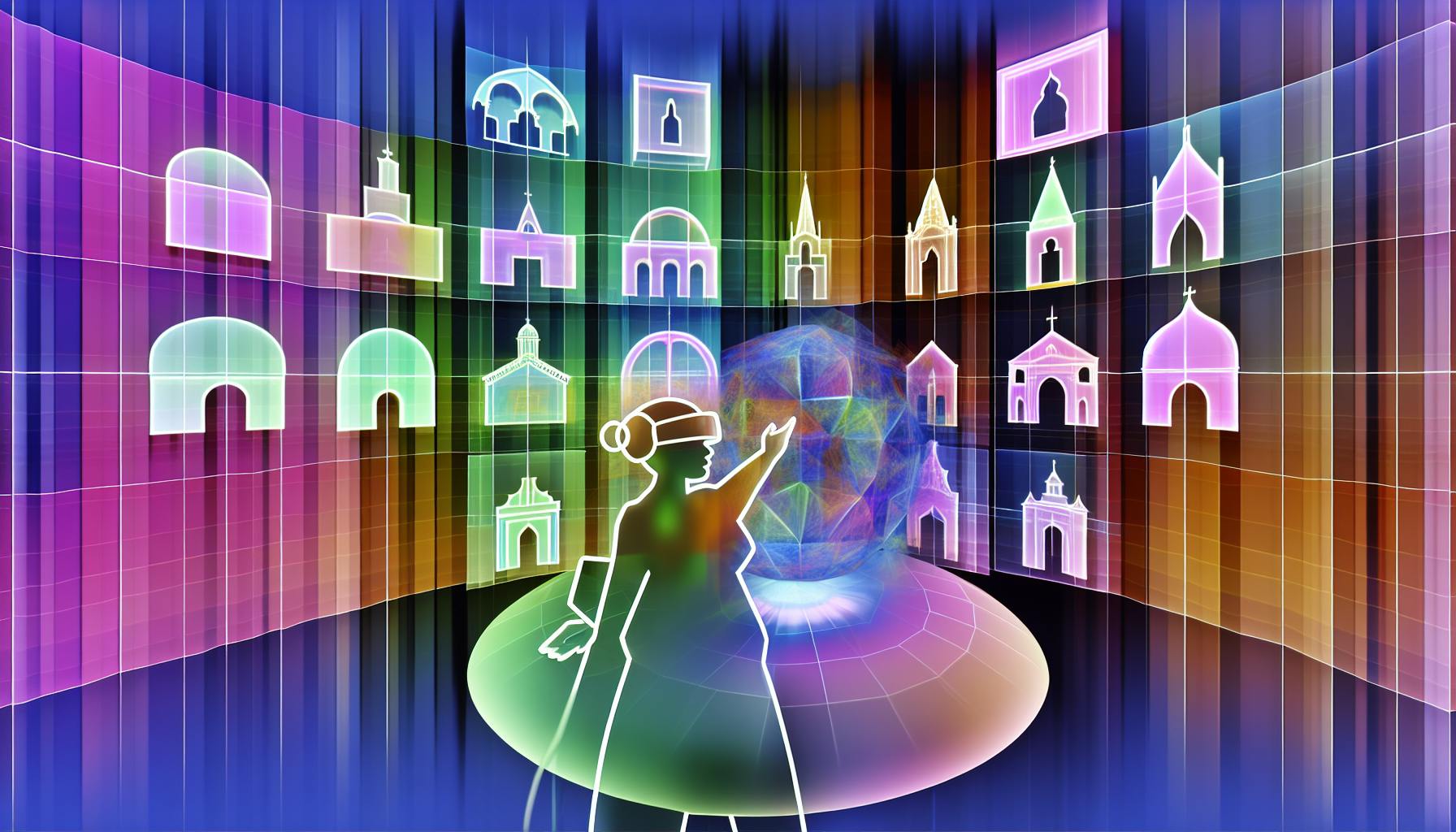Monuments are more than physical structures; they serve as symbols of shared history, values, and identity. They tell stories through design, materials, and symbolism, connecting people to their heritage. However, creating meaningful monuments is complex. Architects must balance historical accuracy with modern needs, ensure fair representation, and navigate material and technological challenges.
Key points:
- Design challenges: Balancing history with contemporary values, ensuring accessibility, and addressing diverse narratives.
- Representation: Incorporating symbols, materials, and spatial layouts that honor different perspectives without alienating groups.
- Material and technology: Combining local materials with modern methods for durability and functionality.
Solutions include involving communities in the design process, using symbolic elements thoughtfully, and leveraging tools like Architecture Helper to integrate historical and modern influences. Successful examples, like the Vietnam Veterans Memorial and the National Museum of African American History and Culture, show how monuments can preserve history and inspire connection.
Culture in Architecture: Understanding How People and Places Influence Each Other
Challenges in Designing Monuments That Reflect Cultural Identity
Designing monuments that resonate with cultural identity is no small feat. Architects face a maze of challenges, from navigating historical complexities to incorporating modern needs, all while ensuring the design remains meaningful and inclusive.
Balancing Historical Accuracy with Modern Needs
One major obstacle is reconciling historical narratives with present-day values. Decisions that once seemed acceptable may now appear outdated or exclusionary. Architects must strike a balance between honoring the past and ensuring monuments remain relevant and accessible for future generations.
Take the ongoing debates surrounding Confederate monuments in the United States. Many of these were erected during the Jim Crow era, long after the Civil War, raising questions about their original intent. Were they built to preserve history, or to serve a political agenda? Architects tasked with redesigning such spaces must carefully navigate these layered histories, ensuring their work respects both historical context and modern sensibilities.
Accessibility is another critical factor. Laws like the ADA require designs that accommodate everyone, which can sometimes conflict with a monument's original intent. Architects must creatively adapt designs to meet these standards while preserving historical integrity.
Adding to the complexity, new archaeological findings and evolving social awareness can shift our understanding of history. What feels accurate today might seem incomplete tomorrow, pressuring architects to create designs that can evolve with changing perspectives.
Once historical accuracy is addressed, the next challenge lies in representing diverse cultural narratives.
Symbolism and Fair Representation
Deciding whose stories to tell and how to tell them is a particularly sensitive challenge. Architects must navigate the delicate task of incorporating diverse voices without alienating or tokenizing any group.
Religious and secular symbolism often sparks debate. In multicultural societies, religious imagery may resonate deeply with some while alienating others. This becomes even trickier when incorporating indigenous spiritual symbols or attempting to represent multiple belief systems within a single design.
Issues of gender and ethnic representation also come into play. Traditional monuments often prioritized certain groups, leaving others underrepresented. Modern architects must consciously avoid repeating these patterns, aiming for designs that feel inclusive and cohesive rather than fragmented or forced.
The scale and prominence of different design elements can unintentionally send messages about whose contributions are most valued. Architects must carefully consider how visitors will interpret the size, placement, and relationships between various components of a monument.
Community involvement adds another layer of complexity. When different groups have conflicting ideas about how their identities should be portrayed, architects often find themselves acting as mediators. Balancing these perspectives while maintaining a coherent design requires patience, diplomacy, and creativity.
After addressing narrative balance, the focus shifts to blending traditional materials with modern advancements.
Combining Local Materials with Modern Technology
Using authentic materials can help reinforce cultural identity, but modern technology is often necessary for durability and functionality. Finding the right balance between these two priorities can be a tough challenge.
For example, traditional local materials may feel more connected to a community’s heritage, but they might not hold up against harsh environmental conditions or may require costly maintenance. Climate change is also forcing architects to rethink material choices. Stone that has lasted for centuries might now struggle against more extreme weather, rising sea levels, or temperature swings - especially for monuments in vulnerable regions.
Budgets often push architects toward modern materials and techniques, but these can sometimes feel disconnected from cultural traditions. Additionally, some traditional building methods require skills that are disappearing, leaving architects with a difficult choice: invest in reviving these techniques or adapt the design to work with more widely available materials.
Incorporating modern technology, such as interactive elements, lighting, or digital displays, can enhance a monument’s appeal but risks clashing with traditional aesthetics. Architects must carefully integrate these features to ensure they complement rather than detract from the overall design.
Finally, the availability of materials can pose logistical challenges. Global supply chain disruptions can make it difficult to source specialized materials, forcing architects to remain flexible or risk delays and cost overruns.
Designing monuments that reflect cultural identity is a balancing act - one that requires careful thought, collaboration, and creativity at every step.
Solutions: Strategies for Designing Culturally Symbolic Monuments
Designing monuments that resonate deeply with communities can be a daunting task, but architects have developed thoughtful strategies to meet these challenges. By focusing on collaboration, meaningful design, and smart use of technology, they create spaces that honor cultural identities and foster a sense of connection.
Community Involvement and Participatory Design
Involving the community from the very beginning transforms potential tensions into opportunities for collaboration. Instead of unveiling a completed design to the public, architects who succeed in this space work hand-in-hand with local voices throughout the process.
The starting point is direct community conversations. These aren’t rigid presentations but open discussions where architects actively listen to local stories, values, and concerns. By hosting multiple sessions with diverse groups, they ensure a broad range of perspectives is represented.
Cultural advisory committees play a critical role in guiding the design process. These committees often include local historians, elders, religious leaders, and representatives from various cultural communities. What’s vital is that their input genuinely shapes decisions, rather than being a mere formality.
Workshops and design charrettes bring the community into the creative process itself. These hands-on sessions allow locals to sketch ideas, share meaningful symbols, and provide feedback on early concepts. This direct involvement fosters a sense of ownership and pride in the final monument.
Technology has expanded the ways communities can participate. Online surveys and virtual town halls reach those unable to attend in-person meetings, while tools like 3D modeling help illustrate how proposed designs would look in the real world. These digital tools make the process more accessible and transparent.
Timing is also key. Rushing community engagement can lead to frustration and pushback, while allowing ample time for multiple feedback rounds builds trust and ensures the final design reflects the community’s vision.
Using Symbolic Architectural Elements
To ensure fair representation, incorporating symbolic elements into monument design is essential. Drawing inspiration from local architectural traditions creates a strong cultural connection. This isn’t about copying historical styles but understanding the deeper meanings behind traditional design principles.
For example, proportional systems rooted in local traditions can guide a monument’s structure. Many cultures have specific mathematical or geometric relationships that carry symbolic meaning. Islamic architecture, for instance, often uses intricate geometric patterns, while Native American designs may emphasize circular forms and cardinal directions.
Material choices and traditional crafts also carry great significance. Using locally sourced materials ties the monument to its physical environment, while repurposing materials from historic buildings adds continuity. Collaborating with local artisans, such as metalworkers or stone carvers, adds an authentic touch and supports the community’s craft traditions.
Color symbolism is another critical consideration. Colors can carry vastly different meanings across cultures - what signifies joy in one community might represent caution in another. Architects must understand these associations to make thoughtful design choices.
Spatial relationships within the monument can reflect cultural values as well. Some traditions emphasize hierarchy with vertical arrangements, while others favor circular layouts that symbolize equality and unity. The monument’s flow and movement should align with local customs and feel intuitive to those who visit.
Finally, scale matters. While some cultures view grand, towering monuments as a mark of respect, others prefer more understated designs that blend into the landscape. Paying attention to these details ensures the monument feels like a true reflection of the community it represents.
Using Technology for Better Design
Once community insights and symbolic elements are in place, technology helps bridge tradition with practicality. Modern tools ensure that the design is durable, functional, and aligned with cultural aesthetics.
Building Information Modeling (BIM) is a powerful tool for coordinating all aspects of a monument’s design and construction. These digital models include details like landscaping, utilities, and lighting, ensuring that every element works together seamlessly.
Advanced fabrication techniques like 3D printing and CNC machining make it possible to recreate intricate cultural symbols at a lower cost without sacrificing authenticity.
To preserve monuments over time, environmental monitoring systems can be integrated. These systems use sensors to detect issues such as moisture damage, structural shifts, or vandalism, allowing for timely maintenance and preservation.
Interactive technologies can also enhance the visitor experience. Features like audio guides, projection systems, or augmented reality provide historical context or multilingual options without detracting from the monument’s core design. These tools remain subtle, ensuring they complement rather than dominate the space.
The key to using technology effectively is ensuring it supports the overall vision. The best designs use technology behind the scenes to highlight craftsmanship and deepen cultural connections, rather than letting it overshadow the monument’s purpose.
Case Studies: Monuments That Successfully Show Cultural Identity
Examples of Successful Monuments
The Vietnam Veterans Memorial in Washington, D.C., is a powerful example of a design that honors cultural memory while promoting healing. Created by Maya Lin in 1982, this black granite wall is celebrated for its simplicity and emotional resonance. The reflective surface invites visitors to connect personally with the names etched into the stone, creating a profound bond between the living and those lost in the Vietnam War. By avoiding grandeur or glorification of conflict, the memorial emphasizes sacrifice and collective mourning. Its below-ground design fosters an intimate, contemplative atmosphere, blending cultural values with contemporary design sensibilities.
Another striking example is the National Museum of African American History and Culture, also in Washington, D.C., completed in 2016. Designed by David Adjaye, its bronze-colored, lattice-patterned exterior reflects both African and American artistic traditions. The building’s form shifts with the light, symbolizing the evolving African American experience. Inside, the museum takes visitors on an emotional journey - from spaces commemorating painful histories to those celebrating resilience and achievement. This thoughtful progression underscores how architectural design can encapsulate and communicate cultural identity.
The Crazy Horse Memorial in South Dakota offers a different approach to cultural representation. Started in 1948 by sculptor Korczak Ziolkowski, this massive mountain carving is a tribute to Native American heritage. The project actively involves members of the Lakota community, ensuring that the design remains true to their values and traditions. Beyond the monument itself, the site includes a museum, cultural center, and educational programs dedicated to preserving and sharing Lakota history. Its sheer scale and collaborative process highlight the enduring influence of Native American culture on regional identity.
These examples showcase diverse methods for embedding cultural identity into monumental design, each creating a meaningful connection between the past and present.
Comparison of Design Elements Across Monuments
A closer look reveals the unique ways these monuments integrate materials, symbolism, and community input to resonate with their cultural contexts. Each project employs distinct strategies to create spaces that honor and preserve cultural narratives.
| Monument | Primary Materials | Symbols | Integration | Community Impact |
|---|---|---|---|---|
| Vietnam Veterans Memorial | Black granite | Reflective surface; below-ground placement | Engraved names fostering personal connections | Provides a space for reflection and healing |
| National Museum of African American History and Culture | Bronze-colored metal panels, glass | Lattice pattern; tapered form | Combines African and American artistic traditions | Promotes public engagement and dialogue |
| Crazy Horse Memorial | Carved granite | Immense scale with Native American motifs | Collaboration with Lakota advisors and artists | Enhances regional identity and supports cultural education |
| 9/11 Memorial | Black granite, bronze, landscaped areas | Reflective pools and tribute | Designed with input from affected families | Offers a site for communal remembrance and healing |
These monuments go beyond mere representation of identity. They create spaces where communities can reflect, learn, and pass their stories to future generations, ensuring cultural narratives endure and evolve over time.
sbb-itb-1be9014
Tools for Exploring and Designing Monuments with Symbolism
Digital platforms have become indispensable for architects aiming to create monuments that resonate with cultural significance. These tools help navigate the tricky balance between honoring historical accuracy and meeting modern design requirements. They also offer advanced features to analyze and merge architectural elements seamlessly.
Using Architecture Helper for Design Inspiration

Architecture Helper is a go-to resource for monument designers who want to incorporate cultural architectural elements into their work. The platform allows users to upload photos for instant analysis, identifying key design influences and characteristics. It also features an extensive library of monuments categorized by style and location, making it easy to explore and draw inspiration.
One standout feature is the ability to mix and match different architectural elements. This allows designers to experiment with blending traditional motifs with modern materials or combining influences from various cultural traditions. The result? Designs that reflect the identities of diverse communities. The platform also offers self-guided tours that provide deeper insights into local architectural histories and narratives.
Named a "Top AI Tool" in Real Estate by CRE Software in 2024 - out of more than 100 contenders - Architecture Helper offers free access, with premium features available for $5 per month or $50 annually. These tools align perfectly with the strategies discussed earlier, providing practical insights into cultural architectural elements.
Practical Benefits for Architects and Enthusiasts
Architecture Helper isn’t just about generating ideas - it offers tangible benefits for both professionals and enthusiasts.
For monument designers, the platform provides detailed insights into architectural styles and their symbolic meanings. This helps designers make thoughtful decisions about materials, forms, and spatial layouts to convey cultural stories effectively. The platform also includes public profile features, allowing architects to showcase their portfolios and build credibility within communities.
Additionally, the platform is constantly updated - new features are added weekly - ensuring users stay informed about the latest trends in architectural analysis and design. It even tracks personal design preferences, helping users identify potential biases or blind spots. This is especially important when working on monuments that aim to authentically represent cultures outside the designer's own background.
Conclusion: Designing Monuments That Preserve and Celebrate Culture
Creating monuments that embody cultural identity requires a deep understanding of the community, a firm grasp of historical context, and a delicate balance between honoring tradition and embracing modern ideas.
As highlighted earlier, collaboration is at the heart of successful monument design. When architects work closely with communities through participatory design, incorporate significant symbolic elements, and utilize advanced tools for analysis and inspiration, they craft structures that resonate deeply and stand the test of time. These collaborative efforts, combined with careful symbolism and thoughtful use of technology, transform monuments into lasting symbols of cultural heritage.
Resources like Architecture Helper provide invaluable support, offering tools to analyze cultural influences and seamlessly integrate them into designs. By doing so, architects can honor traditions while addressing contemporary needs, weaving heritage and modernity into a cohesive narrative.
The most impactful monuments share a few key traits: they tell genuine stories, use materials and forms rooted in local traditions, and create spaces where people can connect, reflect, and celebrate. They steer clear of generic designs by embracing the unique symbols, narratives, and architectural styles that define each culture.
As societies grow increasingly diverse, designers face the challenge - and opportunity - of reflecting evolving cultural narratives. With the right strategies and tools, they can preserve and celebrate heritage while fostering understanding across communities. As explored in earlier sections, thoughtful design ensures monuments serve as powerful symbols of cultural pride, inspiring future generations to cherish their roots and bridge divides. By approaching each project with curiosity, humility, and dedication, architects can create monuments that truly honor and celebrate cultural identity.
FAQs
How do architects design monuments that honor history while reflecting modern values?
Architects create monuments that honor the past while embracing the present by blending historical significance with modern relevance. They weave in important cultural symbols, historical stories, and traditional architectural elements to maintain a connection to history. At the same time, they use contemporary materials, innovative design methods, and themes that align with today's societal values.
This careful balance allows monuments to act as both tributes to history and bridges to the present, fostering a sense of reflection and a shared cultural connection.
Why is community involvement important in designing monuments that reflect cultural identity?
Why Community Involvement Matters in Monument Design
When it comes to designing monuments that genuinely reflect a community's identity, involving local residents and stakeholders is key. This collaborative effort ensures that the monument isn’t just a structure, but a heartfelt tribute to the community’s history, values, and traditions. By giving people a voice in the process, architects can create something that resonates deeply and fosters a sense of pride and ownership.
Beyond the design itself, community participation strengthens social bonds and empowers individuals to play an active role in preserving their shared heritage. These monuments, shaped by collective memory and identity, stand as enduring symbols of unity - treasured by the present and future generations alike.
How can architects use technology in monument design without losing cultural authenticity?
Architects have the opportunity to weave technology into monument designs in ways that amplify storytelling and deepen engagement, all while staying true to the monument's traditional roots. Tools like augmented reality (AR), interactive displays, and virtual reconstructions can serve as powerful additions, offering visitors richer educational experiences without overshadowing the cultural significance of the site.
The secret lies in using technology as a supporting role rather than the centerpiece. For instance, QR codes placed discreetly can provide visitors with access to detailed historical information, while AR features can bring historical events to life, allowing people to connect more deeply with the monument's story. When integrated with care, these tools enhance the experience, ensuring that the monument's cultural identity remains at the forefront.


